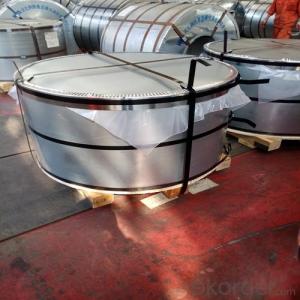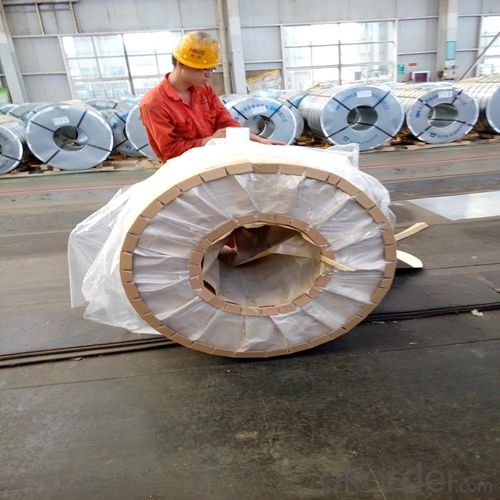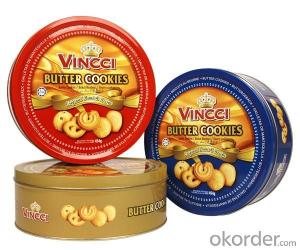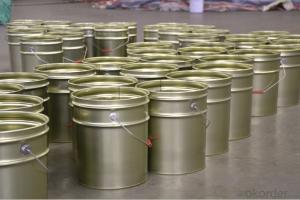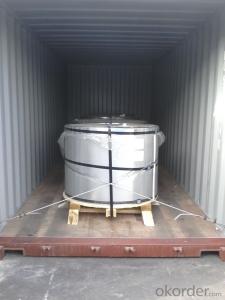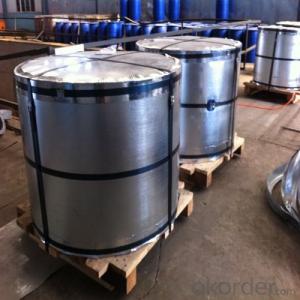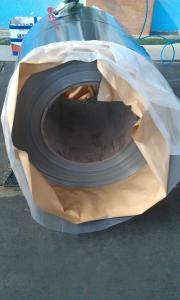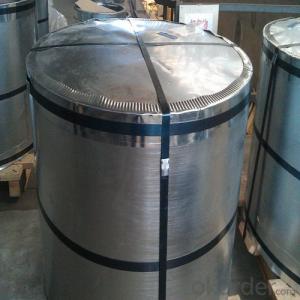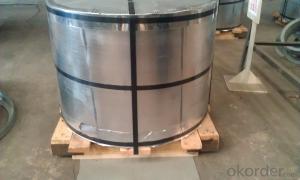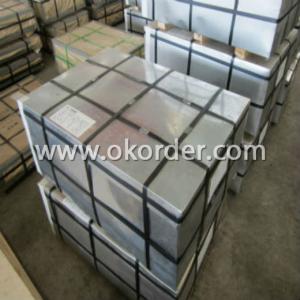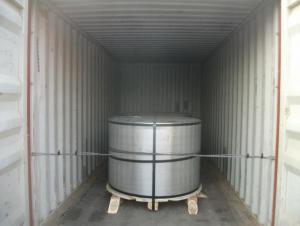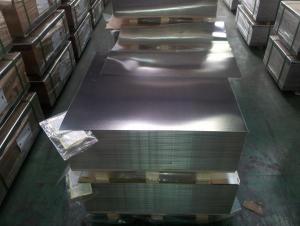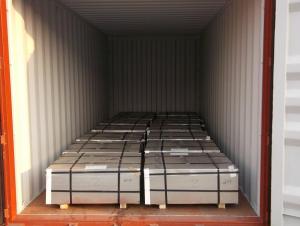Prime Quality Electrolytic Tinplate and TFS for Metal Package of Chemical or Industrial Useage
- Loading Port:
- Shanghai
- Payment Terms:
- TT OR LC
- Min Order Qty:
- 25 m.t.
- Supply Capability:
- 30000 m.t./month
OKorder Service Pledge
OKorder Financial Service
You Might Also Like
Specification
1.Structure of Prime Quality Electrolytic Tinplate and TFS for Metal Package of Chemical or Industrial Useage Description
Tin Free Steel (TFS) is thin black plate with two coats; one of metal chrome film and the other of chromium oxide. TFS is ideal for the manufacturing of crowns, container ends & shallow drawn cans etc. TFS is also known as Chromium coated steel.
The product complies with ASTM A-657 Specification and is manufactured with low current density (TFS-III) and is supplied in coils (up to 12 metric tons)or sheets.
2.Main Features of the Prime Quality Electrolytic Tinplate and TFS for Metal Package of Chemical or Industrial Useage
Appearance – Tinplate is characterized by its beautiful metallic luster. Products with various kinds of surface roughness are produced by selecting the surface finish of the substrate steel sheet.
Paintability and printability – Tinplates have excellent paintability and printability. Printing is beautifully finished using various lacquers and inks.
Formability and strength – Tinplates have got very good formability and strength. By selecting a proper temper grade, appropriate formability is obtained for different applications as well as the required strength after forming.
Corrosion resistance – Tinplate has got good corrosion resistance. By selecting a proper coating weight, appropriate corrosion resistance is obtained against container contents. Coated items should meet 24 hour 5 % salt spray requirement.
Solderability and weldability – Tinplates can be joined both by soldering or welding. These properties of tinplate are used for making various types of cans.
Hygienic – Tin coating provides good and non toxic barrier properties to protect food products from impurities, bacteria, moisture, light and odours.
Safe – Tinplate being low weight and high strength makes food cans easy to ship and transport.
Eco friendly – Tinplate offers 100 % recyclability.
Tin is not good for low temperature applications since it changes structure and loses adhesion when exposed to temperatures below – 40 deg C.
3.Prime Quality Electrolytic Tinplate and TFS for Metal Package of Chemical or Industrial Useage Images
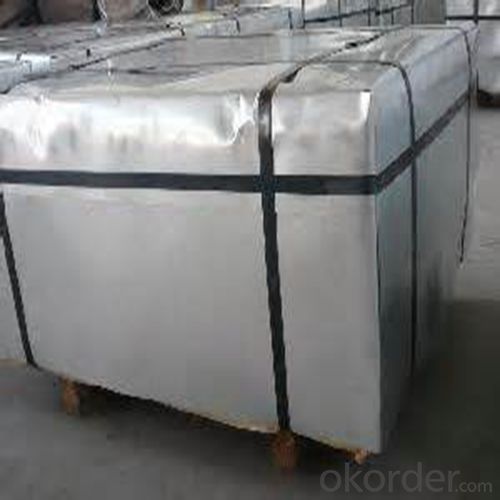
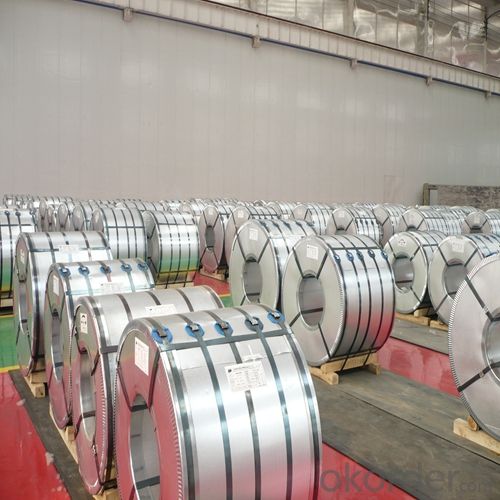
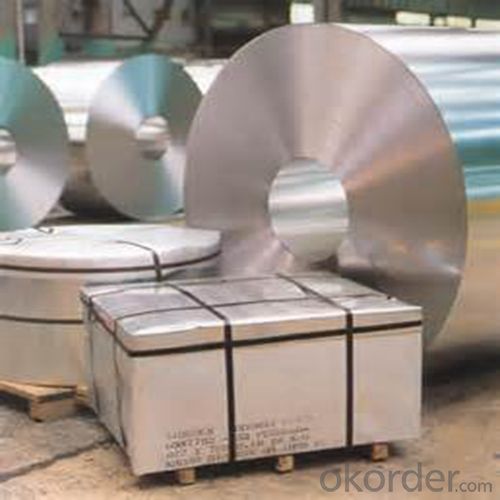
4.Prime Quality Electrolytic Tinplate and TFS for Metal Package of Chemical or Industrial Useage Specification
Specification of :
Standard: ISO 11949 -1995, GB/T2520-2000,JIS G3303,ASTM A623, BS EN 10202
Material: MR,SPCC
Thickness:0.15mm - 0.50mm
Width: 600mm -1150mm
Temper: T1-T5
Annealing: BA & CA
Coil Inner Diameter: 508mm
Weight: 6-10 tons/coil 1~1.7 tons/sheets bundle
Passivation:311
Oil: DOS
Surface: Finish,bright,stone,matte,silver
5.FAQ of Prime Quality Electrolytic Tinplate and TFS for Metal Package of Chemical or Industrial Useage
- How are the tinplates specified?
The tinplates are specified as per the steel base, extent of tempering, the coating weight, annealing method and the surface finish.
- How many types there are for base steels?
The base steels are of three types: Type MR, L, D
- Q: What are the common storage and handling requirements for tinplate?
- Common storage and handling requirements for tinplate include keeping it in a dry and clean environment to prevent corrosion, avoiding exposure to extreme temperatures, and ensuring proper stacking to prevent damage to the material. It is also important to handle tinplate with care to avoid any bending or scratching that could affect its quality and appearance.
- Q: How does tinplate perform in microwave ovens?
- Tinplate is not suitable for use in microwave ovens as it can cause sparks and potentially damage the appliance.
- Q: Are there any health concerns associated with tinplate packaging?
- Yes, there are potential health concerns associated with tinplate packaging. Tinplate packaging can contain traces of heavy metals, such as lead or cadmium, which can leach into the packaged food or beverage, posing a health risk if consumed. Additionally, tinplate packaging may also contain a thin layer of plastic coating that can potentially release harmful chemicals into the food or drink. It is important to ensure that tinplate packaging is properly regulated and that food and beverage manufacturers comply with safety standards to minimize these health risks.
- Q: Cookies with tinplate packaging has what advantage
- 1. good mechanical properties: tinplate cans relative to other containers, such as plastic, glass, paper containers and strength, and good rigidity, it is not easy to break. It is not only used for small sale packing, but also the main container for large transportation package. 2. excellent barrier: Tin than any other...
- Q: Can tinplate be used for packaging petrochemical products?
- Yes, tinplate can be used for packaging petrochemical products.
- Q: What are the main applications of tinplate in the electrical industry?
- Tinplate is widely used in the electrical industry for various applications such as the production of electrical enclosures, transformer tanks, and terminal boxes. Its corrosion-resistant properties make it an ideal material choice to protect electrical components from moisture and other environmental factors. Additionally, tinplate is used for manufacturing electrical connectors, terminals, and busbars due to its excellent electrical conductivity.
- Q: How is tinplate affected by humidity?
- Tinplate is highly susceptible to corrosion, and therefore, humidity has a significant impact on it. Moisture in the air can cause tinplate to rust and deteriorate more quickly.
- Q: How big is the difference between tinplate and stainless steel 316L?
- 316L is a kind of austenitic stainless steel with excellent corrosion resistance. The tinplate is not comparable. 316L is superior to tinplate in appearance, corrosion resistance, heat resistance and strength. Of course, the price is much higher than that of tinplate.
- Q: How does tinplate compare to other packaging materials in terms of recyclability?
- Tinplate is highly recyclable and often considered to be one of the most sustainable packaging materials available. It can be easily separated from other materials during the recycling process and has a high recycling rate, making it a preferred choice for environmentally conscious consumers and industries.
- Q: The composition of tinplate?
- The name "tinplate" is not exact. Therefore, in 1973, when the Chinese tin plate meeting was called "tinplate", the official document no longer used the name "tinplate".
Send your message to us
Prime Quality Electrolytic Tinplate and TFS for Metal Package of Chemical or Industrial Useage
- Loading Port:
- Shanghai
- Payment Terms:
- TT OR LC
- Min Order Qty:
- 25 m.t.
- Supply Capability:
- 30000 m.t./month
OKorder Service Pledge
OKorder Financial Service
Similar products
Hot products
Hot Searches
Related keywords
